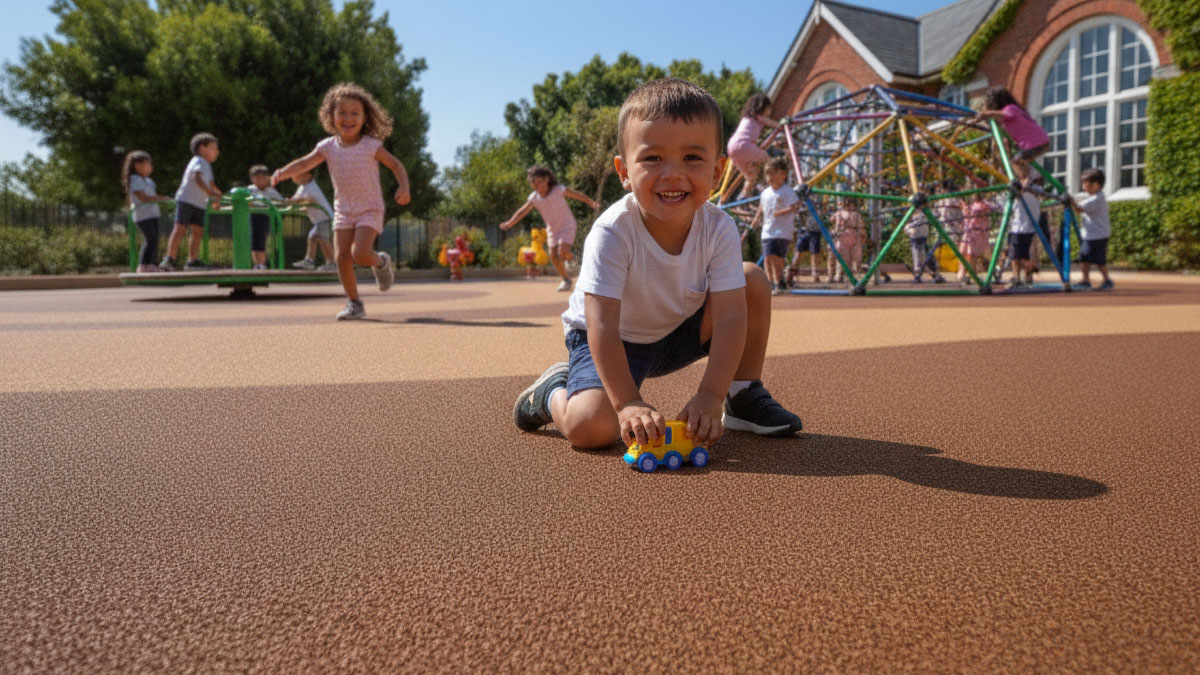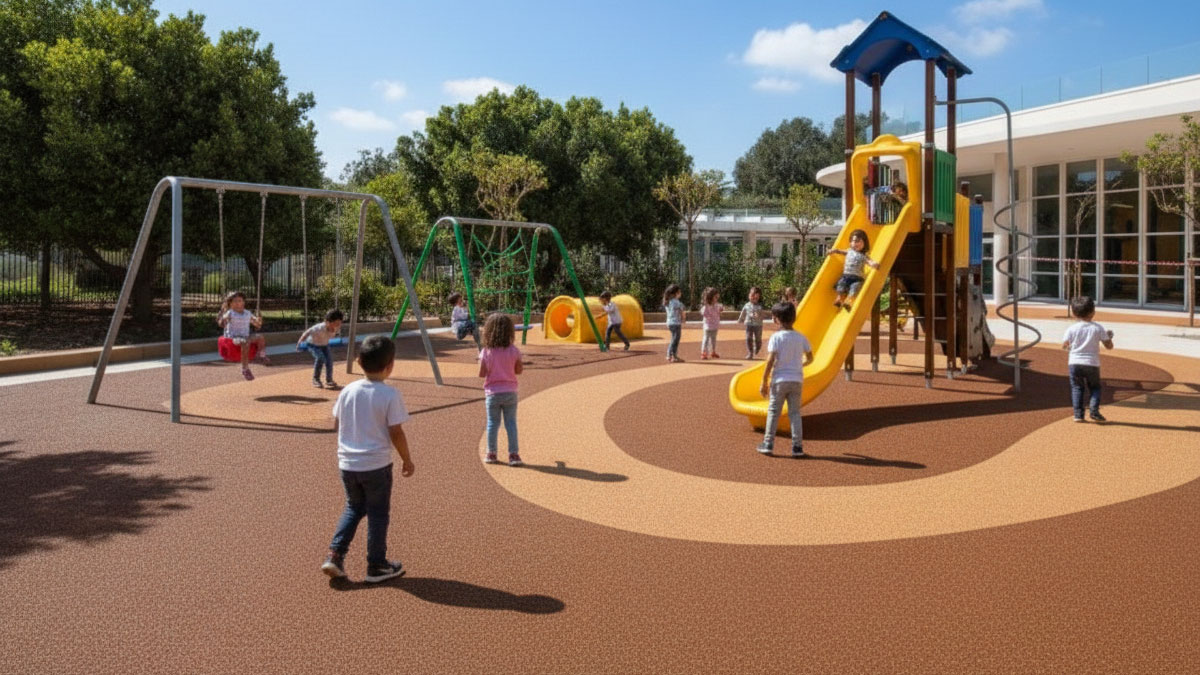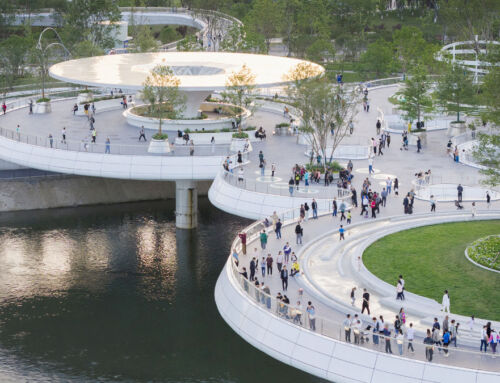In this new instalment of the series dedicated to shock-absorbing flooring in children’s playgrounds, we’ll explore those made from cork. Cork is an innovative option for children’s play areas.
Among the main advantages of cork are:
-Its safety; it offers good cushioning capacity against falls, therefore effectively reducing the risk of injury.
-Furthermore, it is a highly sustainable and environmentally friendly option, as it is a natural, renewable, and biodegradable material.
-From a comfort standpoint, its texture is pleasant to the touch, it doesn’t overheat when exposed to sunlight, and it is comfortable for children to play barefoot.
-Finally, its natural appearance facilitates its harmonious integration into all types of environments, whether green or urban.

However, cork also has some drawbacks:
-In terms of durability, although it is resistant, it can degrade more quickly than continuous rubber under conditions of very intensive use or in excessively humid climates.
-It requires periodic inspections to ensure it maintains its shock-absorbing capacity and does not deteriorate due to prolonged exposure to water or sunlight.
-Finally, it offers less decorative versatility, as unlike rubber—which allows for designs in a variety of colours and shapes—cork has a more uniform appearance.
Its natural origin, remarkable impact absorption capacity, and sustainable profile make it an alternative to other traditional materials such as rubber or artificial turf.
As you can see, shock-absorbing cork flooring represents a safe and environmentally friendly option for playgrounds, especially suitable for projects that prioritize sustainability and landscape integration. However, its selection must carefully consider the specific conditions of use, the local climate, and maintenance requirements.
By Pablo Vidal, Senior Architect in the Architecture Department at Amusement Logic






